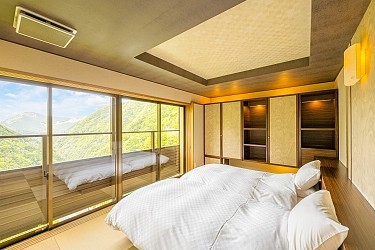Oku-Iya Kazurabashi Bridges
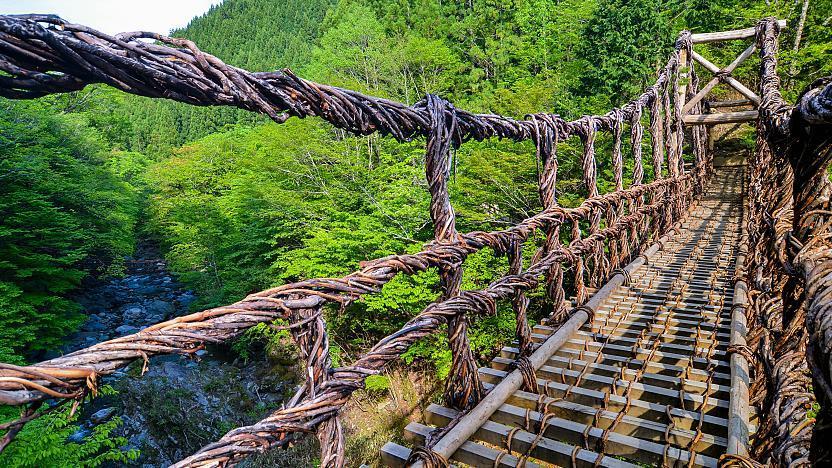
13 suspension bridges made of mountain vines (kazurabashi) used to exist in the Iya Valley and provided a vital means of getting people and goods across the river in the past. Two of the surviving bridges still stand side by side deep in the inner valley. They are known as the Oku-Iya Kazurabashi (ē£æcÆJō±Ådé®éĖéńŗ┤, Oku-Iya Nijū Kazurabashi).
The larger of the two bridges, Husband Bridge (Otto no Hashi), stretches 44 meters across the river next to a small waterfall, while the slightly lower Wife Bridge (Tsuma no Hashi) spans 22 meters a little ways upstream. The bridges are constructed with steel cables hidden within the vines for safety and are rebuilt every three years. They are connected to each other by a network of paved hiking trails that also lead to camping facilities on the far side of the river.
Another popular attraction is a Wild Monkey Bridge found next to the Wife Bridge. It is a wooden cart suspended on a rope over the river and was used to transport goods and people. Visitors can try out the wild monkey bridge and pull themselves across the river.
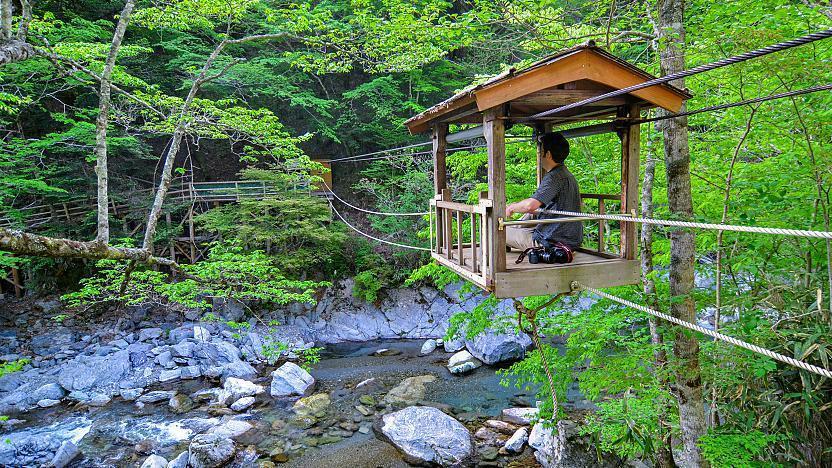
Getting there and around
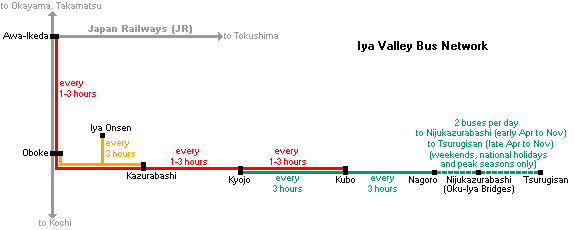
A rental car is recommended for visiting the Oku-Iya Kazurabashi Bridges.
Alternatively, take a bus from Awa-Ikeda Station to Kubo (2 hours, 1790 yen, 4 buses/day), transfer to another bus bound for Nijukazurabashi or Mount Tsurugi, and get off at the Nijukazurabashi (ō±Ådé®éĖéńŗ┤) bus stop (30 minutes, 430 yen, 2 buses/day). Buses from Kubo to the bridge operate only on weekends and during peak seasons from April to November. Peak seasons include Golden Week, the summer holidays (mid July through August) and the autumn color season (October to early November).
How to get to and around the Iya Valley
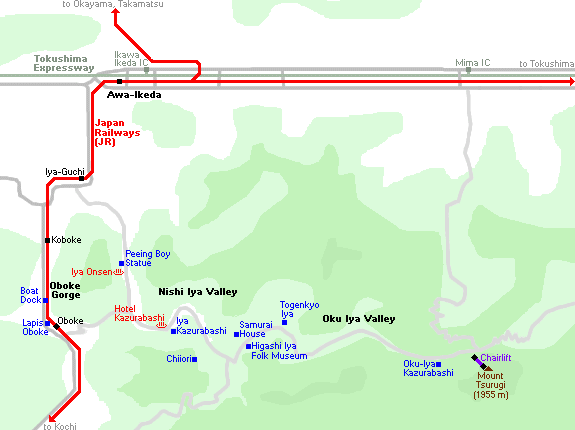
Hours and Fees
Hours
8:00 to 18:00 (July and August)
Closed
Admission
Questions? Ask in our forum.
Hotels around Iya Valley
-
-
![]() SponsoredHotel Iya OnsenAn onsen ryokan commanding Iya Valley. Enjoy new bath with amazing view and riverside bath 170m down by cable car. Free shuttle to/from JR Oboke Sta. Wi-Fi available.View siteSponsored
SponsoredHotel Iya OnsenAn onsen ryokan commanding Iya Valley. Enjoy new bath with amazing view and riverside bath 170m down by cable car. Free shuttle to/from JR Oboke Sta. Wi-Fi available.View siteSponsored
-
